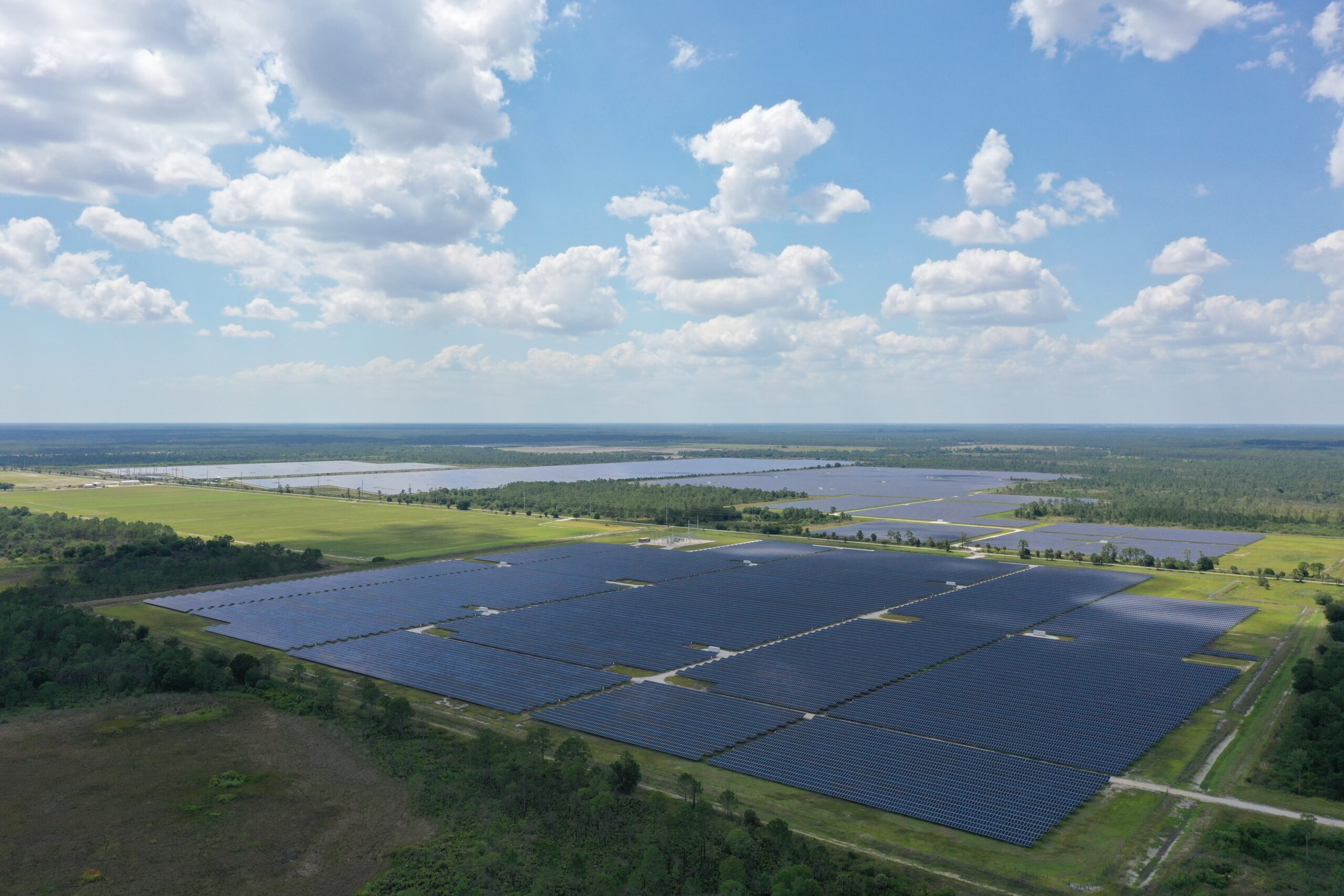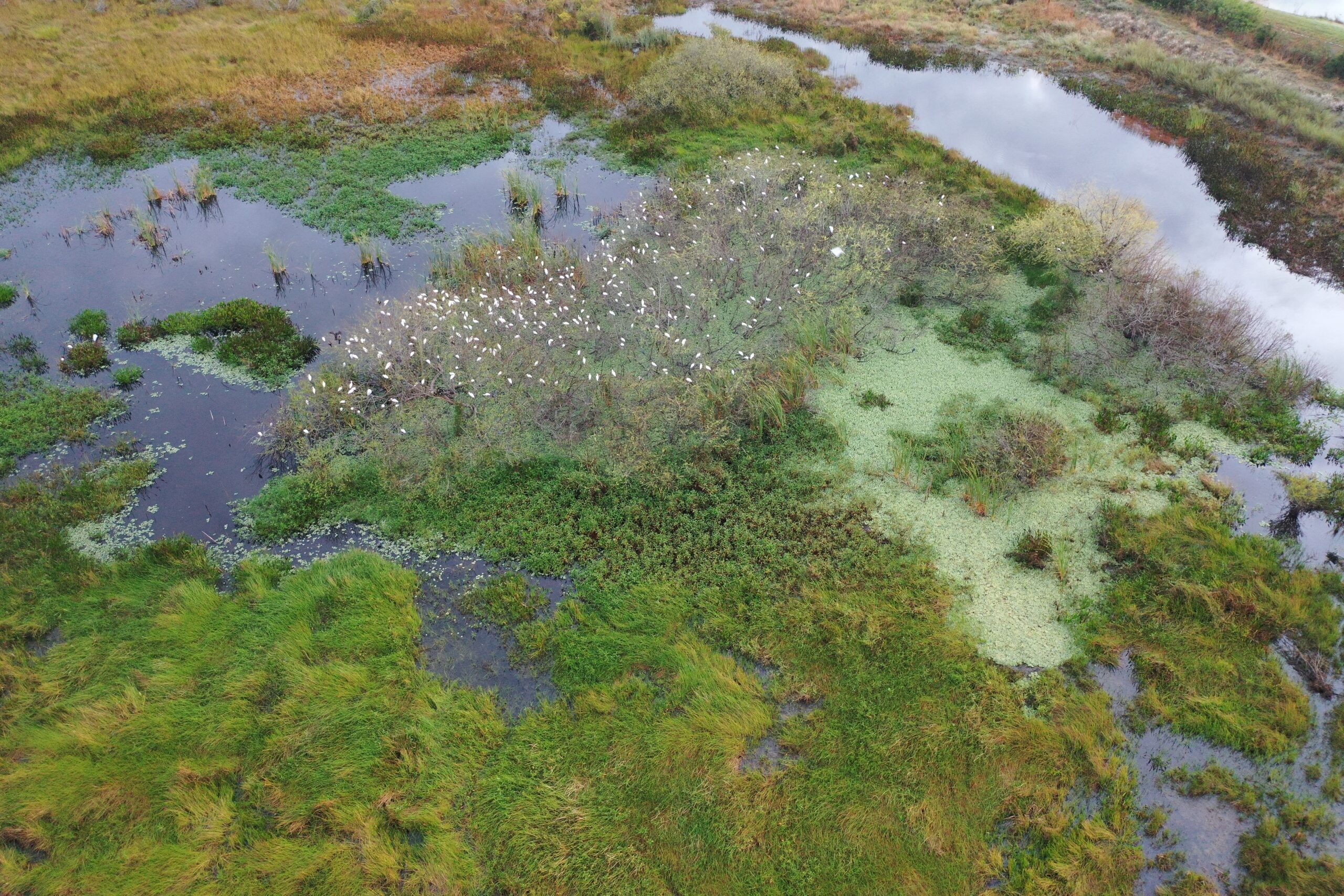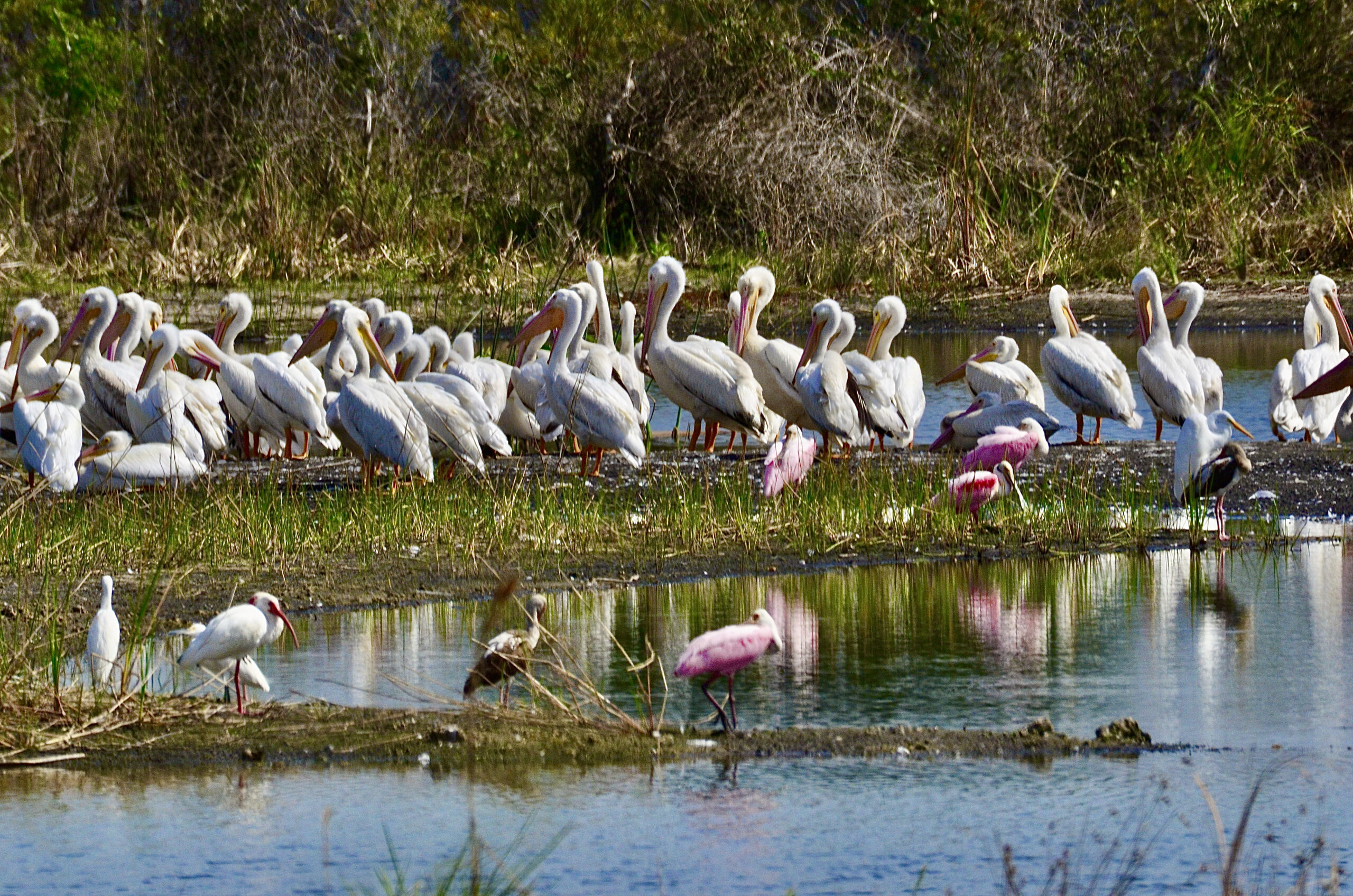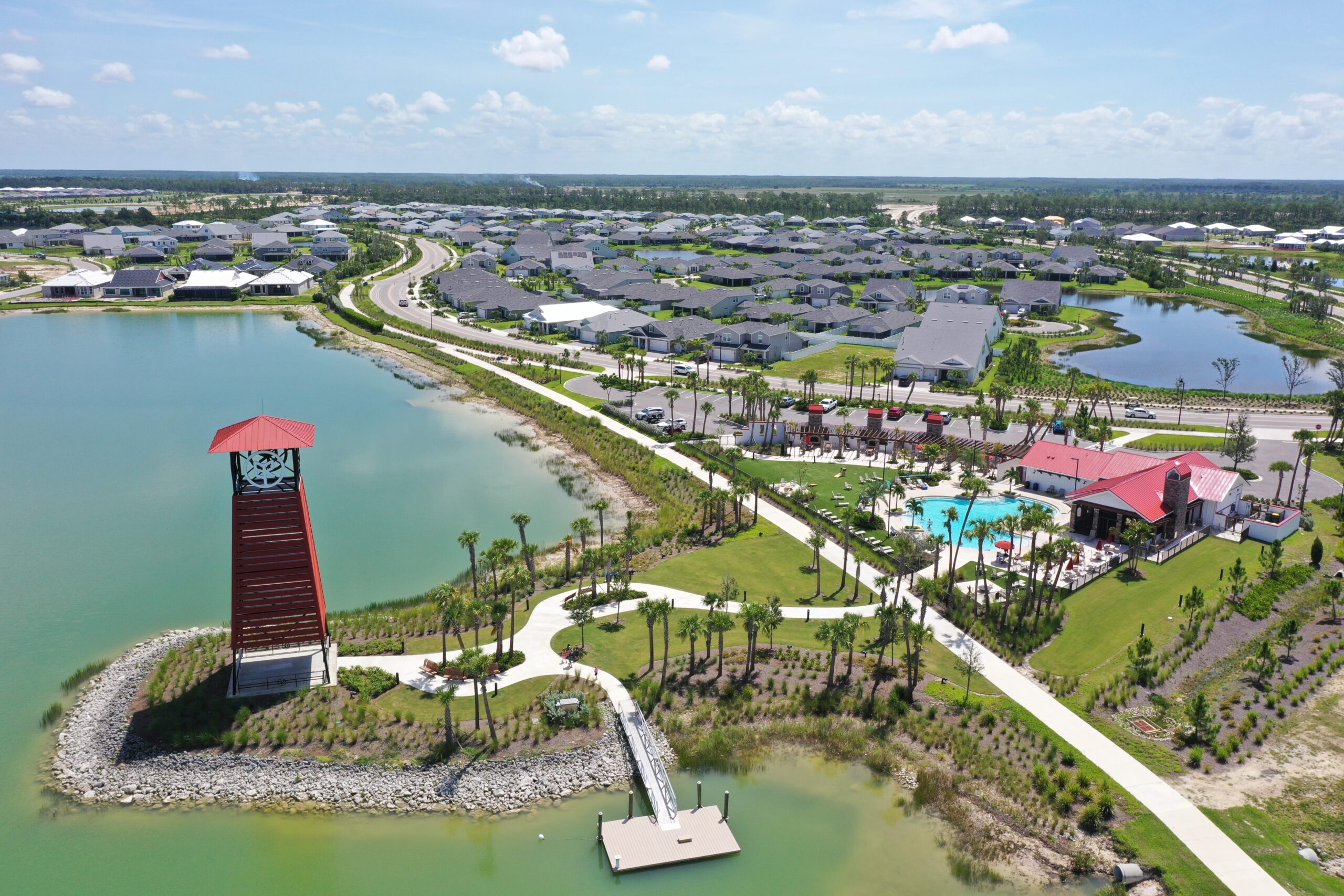Solar community Babcock Ranch planned for growth and resilience, showing us all what’s possible.
By Brian Libby
When Hurricane Ian touched down in September 2022, becoming the deadliest hurricane in Florida since 1935, it caused about $112 billion in damage. Particularly hard-hit were western Florida cities like Fort Myers and Cape Coral, where the Category 4 hurricane sat overhead for nearly 10 hours, dumping more than a foot of rain. But at nearby Babcock Ranch the damage was negligible. Babcock Ranch was already noteworthy as the first solar-powered city in the United States, but sustainability and resilience have long been foundational principles. Some of the town’s good fortune was due to beneficial geography, being 30 feet above sea level. But the town’s proven resilience comes down to how it was planned.
“I hoped I’d never actually have to prove that investing in resiliency was the right thing to do. But the good news is that we were ready for the hurricane, and boy did it pay off,” said Syd Kitson, chairman and CEO of real estate development company Kitson & Partners, which spearheaded Babcock Ranch, a burgeoning planned community just 24 miles from Fort Myers.
“Everyone else around us was out of power, their properties flooded. But here at Babcock Ranch, after the storm cleared I jumped in my car, and the only damage I found was a few downed trees and a few shingles off the roofs. That’s it. Our recovery was maybe a day. So people here were out helping people in our surrounding communities, and taking people in from Fort Myers. It’s a reminder that sustainability and resiliency are one and the same,” Kitson said. “You see wetlands and conservation areas as you drive through this town, and it feels different from any other town because of that. And people love it.”
Hurricane Ian destruction elsewhere in Florida.
“Hurricane Ian Storm Damage” image by Florida Fish and Wildlife licensed under CC BY-NC-ND 2.0 DEED.
Nature preserve meets solar field
Since Ian, the community has only gained fame. Thanks to its own water treatment plant, Babcock Ranch was the only town in the county not to receive a boil-water notice post-Ian. Thanks to its underground electrical transmission lines, there were no downed utility poles or power outages. And thanks to concrete construction, its buildings were left relatively unscathed. Its managed wetlands, rain gardens, and interconnected lakes for stormwater management helped prevent flooding. And its more than 700,000 solar panels were almost completely undamaged.
This planned community comprises approximately 17,000 acres. Announced in 2005 as part of a public-private partnership with the State of Florida and local governments, the town’s founding coincided with setting aside the neighboring Babcock Ranch Preserve, attracting wildlife to the largest conservation land acquisition in state history.


First solar-powered city
But the town’s claim to fame is energy. In 2009, Kitson & Partners joined with Florida Power & Light to make Babcock Ranch the first solar-powered city in the US. That comes not so much from rooftop solar panels as from 900 acres devoted to Babcock Ranch’s solar field, holding two 750 megawatt arrays. The net production of renewable energy exceeds the total amount the town consumes. Babcock Ranch also houses the largest solar-storage system operating in the US today, able to store 1 megawatt of power and discharge for 4 hours. Buyers also have the option to install rooftop solar panels, making it easy to own an electric car. And if an even stronger hurricane arrives, Babcock includes a Category 5 hurricane shelter.
“We said from the beginning that we can’t be sustainable if we don’t have the right energy source. And it took us eight years, but becoming the first solar-powered town in America was an obsession that I had,” Kitson explained.
While its impressive resilience during Hurricane Ian brought more attention to Babcock Ranch, it was already becoming a destination during and after the COVID-19 pandemic. As millions of office workers became accustomed to remote work, living near an urban center became less necessary. In 2020, Babcock Ranch’s sales figures increased over 2019, and have continued to grow. Today more than 5,000 people live in the community, with projected growth to 50,000. Many work remotely from their homes, thanks to high-speed, gigabit-per-second Internet connections.
Babcock beginnings
Kitson grew up as an outdoorsman, camping and fishing. “I consider myself a strong environmentalist who became a developer,” he says. “How do you reconcile that? For me it was very simple: I wanted to do development in a way that was different, that was better. And so I set out to prove that you could build a new community and have it work hand-in-hand with nature.”
At Babcock Ranch, a natural landscape is always close by. “We have a thousand people a day moving into the state of Florida. We’ve got to figure out how to do it right,” Kitson said. “People move here for the natural resources. They move here for the water. They move here because of how beautiful the landscapes are, and the lifestyle. Well, if we destroy that, people are eventually going to reject it.” As renderings of the planned solar city went public, a 2003 Time magazine article called it “A Solar-Powered Solution to Florida Sprawl.”


Places to work, learn, and shop
From the beginning, its developers have seen Babcock Ranch as a true town, meaning a main street with cafes and shopping, as well schools. Babcock has its own K through 12 schools, and they’re hoping to attract a local university to open a campus. There’s also a library and a shared-office space. Part of the sustainability picture is to have walkable amenities and services.
Eventually Babcock Ranch is planning to accommodate a population of 50,000 in the decades ahead, by continuing to grow its solar array and water-treatment facilities. The new Midtown neighborhood will include new health care facilities, an additional 3.5 miles of trails, and about 6 million square feet of new retail and commercial space, along with new schools and an integrated transit system. There will be houses for sale as well as rental, both single-family homes and condos/apartments. Different housing types are meant to encourage a diverse population. All homes are built to Florida Green Building Coalition standards for energy, water, and indoor air quality, using captured greywater for irrigation of drought-tolerant native landscaping.

With climate change only projected to increase in the years ahead, there will be more hurricanes to survive. Meanwhile, Babcock Ranch is about more than resilience or even renewable energy. It’s about envisioning a more positive future, and showing what’s possible, Kitson explained. “And more importantly, other developers are figuring it out and copying it.”
The author:
Brian Libby is a Portland, Oregon-based design and arts journalist. He has written for The New York Times, The Wall Street Journal, Architectural Digest, Dwell, and Metropolis, among many others. You can find him at brianlibby.com.
Our team researches products, companies, studies, and techniques to bring the best of green building to you. Elemental Green does not independently verify the accuracy of all claims regarding featured products, manufacturers, or linked articles. Additionally, product and brand mentions on Elemental Green do not imply endorsement or sponsorship unless specified otherwise.







![10 Steps Toward a Zero Energy Home [Infographic]](https://elemental.green/wp-content/uploads/2016/04/cbfb-440x264.jpg)

